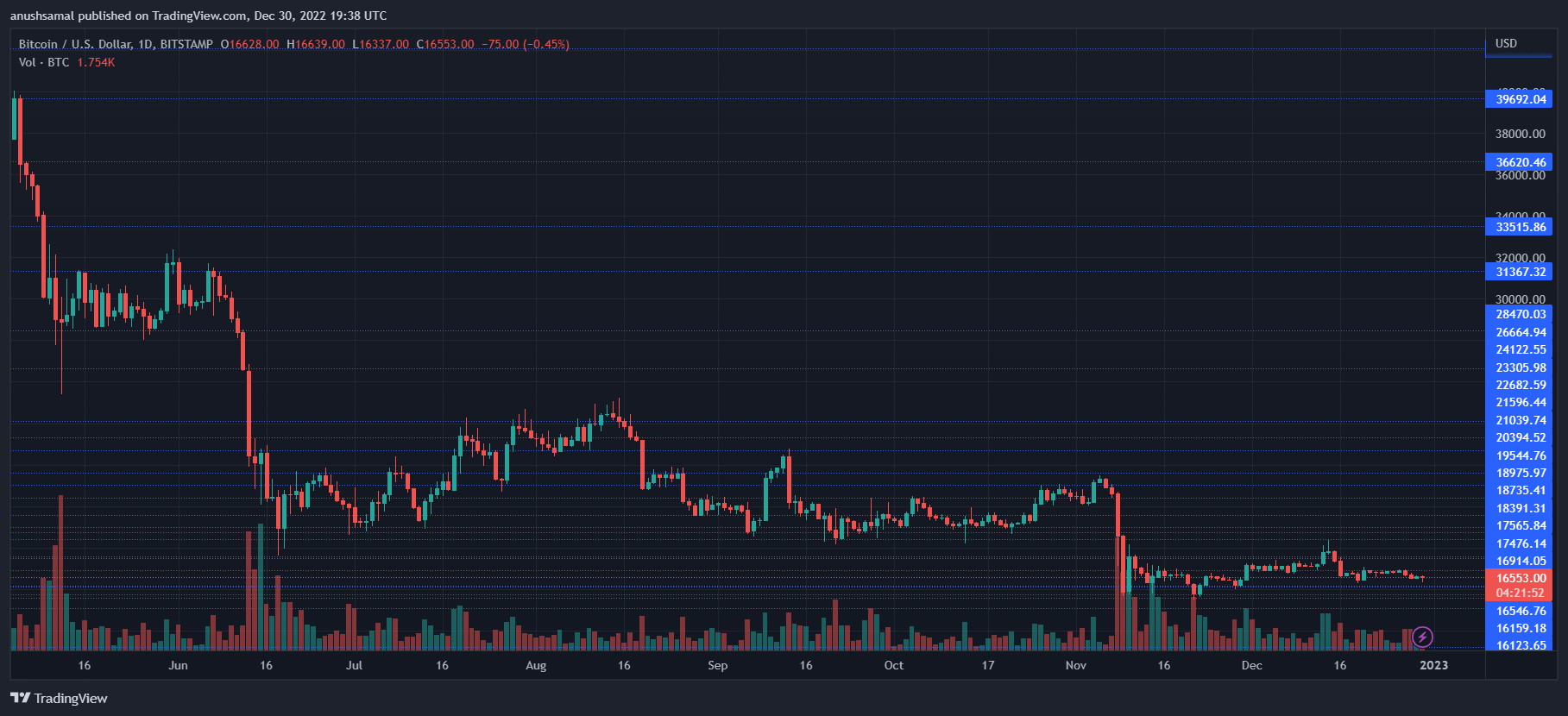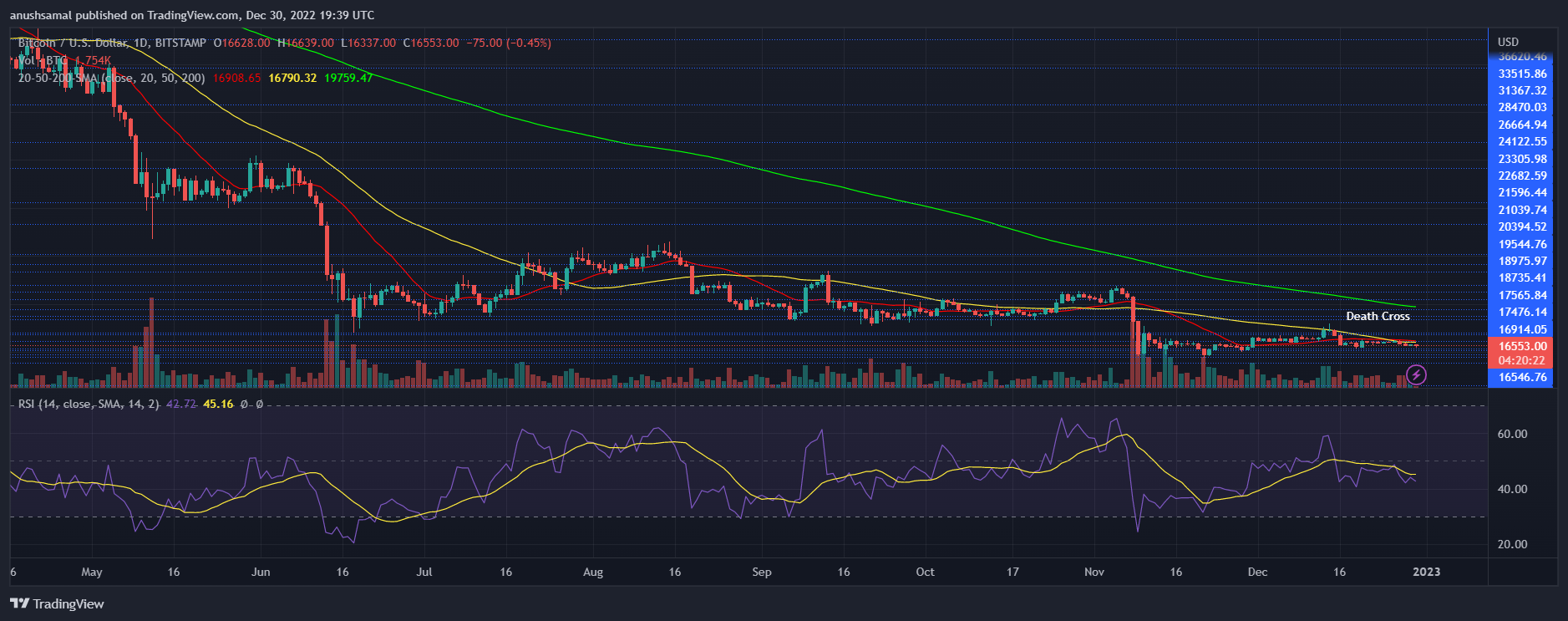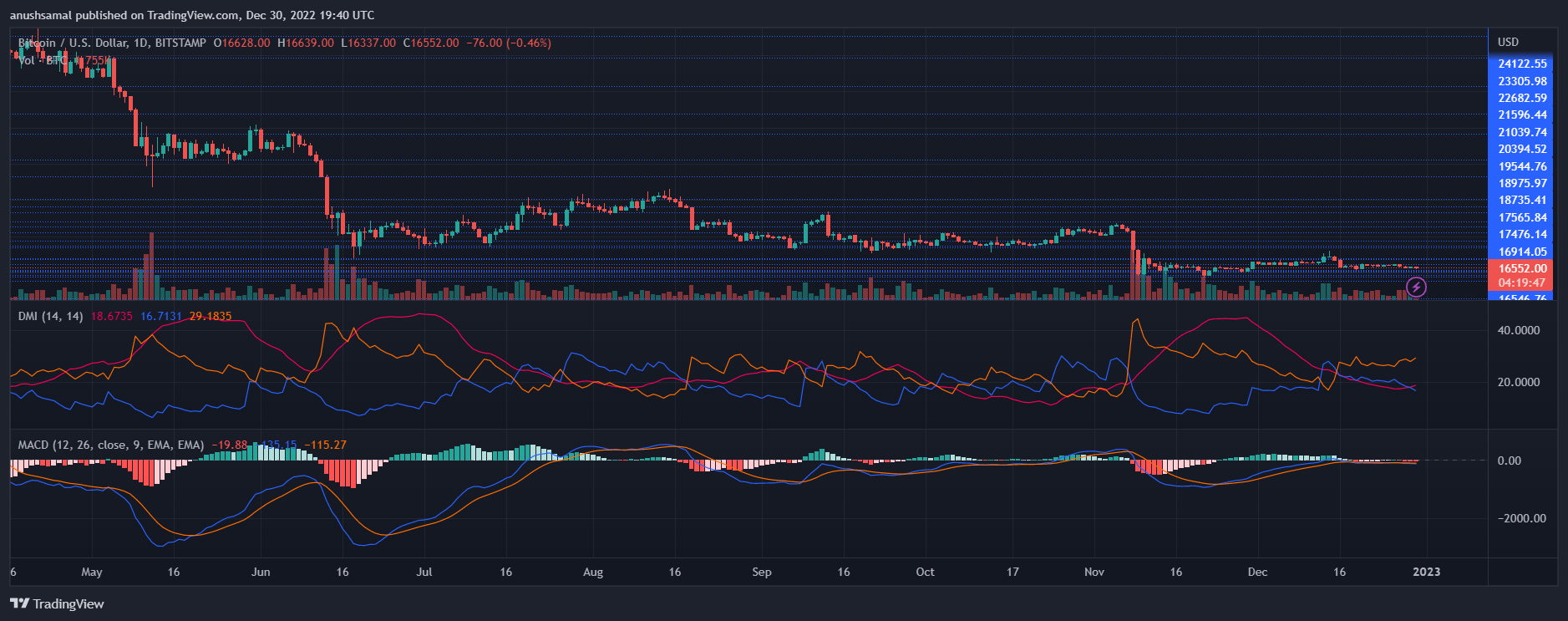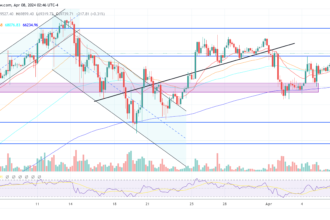It’s been a tough year for Bitcoin and most major altcoins. In the past 24 hours, Bitcoin lost 1% of its value, indicating consolidated price action. BTC has also not made much progress over the past week as the coin only lost 1.6% of its market value.
The coin has been fluctuating between $16,400 and $18,000 for several weeks. The closest support line for the coin stood at $16,000. The technical outlook for Bitcoin showed everyday price action due to a decrease in purchasing power on the one-day chart.
As Bitcoin’s price has remained undecided for quite some time, sellers have flooded the market, indicating that the coin is headed for another round of depreciation. Bitcoin’s trading volume has declined significantly, confirming that bears determined the asset’s price.
If selling pressure continues to mount, BTC will soon lose its crucial $16,000 price point. Currently, BTC is down 76% from its all-time high, secured in 2021.
Bitcoin Price Analysis: One Day Chart

BTC was trading at $16,550 at the time of writing. Bitcoin was trading close to its $16,000 immediate support level. Judging by the technical outlook, the coin may experience further depreciation before it begins to reverse its price action.
Overhead resistance for Bitcoin was $16,900; clearing this will allow the crypto to reach $17,400 and eventually try to break through $18,000.
On the other hand, if Bitcoin falls below its current price level, it will fall through USD 16,000 and cross USD 15,800. The amount of Bitcoin traded in the last session fell, indicating a drop in purchasing power for the asset.
Technical analysis

BTC traders could again witness a fall in asset prices in the coming trading sessions. The Relative Strength Index (RSI) was below the half line, at around 40, indicating that there were far more sellers than buyers. RSI had also noticed a decline, signifying a further loss of value.
Similarly, BTC price was below the 20-Simple Moving Average (SMA) line, indicating that sellers were driving the price momentum in the market.
The SMA also formed a death cross; it is formed when a longer moving average line crosses a shorter moving average line; in this case, the 50-SMA line was above the 20-SMA line. This sign on the chart is accompanied by the strengthening of the bears in the market.

Other technical indicators have also indicated that sellers are here to stay a bit longer. The Moving Average Convergence Divergence (MACD) indicates price momentum and reversals. MACD depicted a sell signal when the indicator noticed red signal bars after undergoing a bearish crossover.
The sell signal could mean that the price would fall further. The Directional Movement Index, which reflects price direction, was negative.
The -DI (orange) line was above the +DI (blue) line. The Average Directional Index (red) was near the 20 mark with an increase, highlighting that bearish action could gain momentum during the immediate trading sessions.
Featured image from Unsplash, charts from TradingView.com














